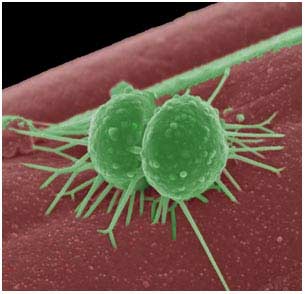Bacteria that generate significant amounts of electricity could be used in microbial fuel cells to provide power in remote environments or to convert waste to electricity
Professor Derek Lovley from the University of Massachusetts, USA isolated bacteria with large numbers of tiny projections called pili which were more efficient at transferring electrons to generate power in fuel cells than bacteria with a smooth surface. The team’s findings were reported at the Society for General Microbiology’s meeting at Heriot-Watt University, Edinburgh, today (7 September).
The researchers isolated a strain of Geobacter sulfurreducens which they called KN400 that grew prolifically on the graphite anodes of fuel cells. The bacteria formed a thick biofilm on the anode surface, which conducted electricity. The researchers found large quantities of pilin, a protein that makes the tiny fibres that conduct electricity through the sticky biofilm.
“The filaments form microscopic projections called pili that act as microbial nanowires,” said Professor Lovley, “using this bacterial strain in a fuel cell to generate electricity would greatly increase the cell’s power output.”
The pili on the bacteria’s surface seemed to be primarily for electrical conduction rather than to help them to attach to the anode; mutant forms without pili were still able to stay attached.
Microbial fuel cells can be used in monitoring devices in environments where it is difficult to replace batteries if they fail but to be successful they need to have an efficient and long-lasting source of power. Professor Lovley described how G. sulfurreducens strain KN400 might be used in sensors placed on the ocean floor to monitor migration of turtles.











